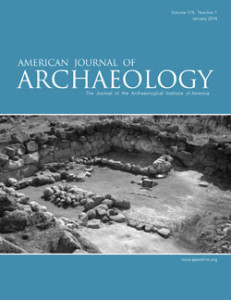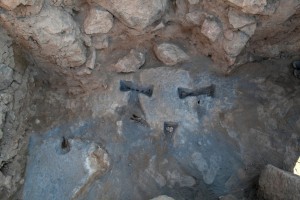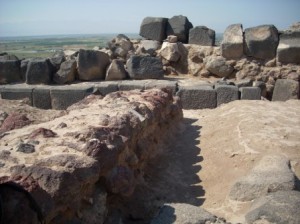In 2013, the United States Ambassador to Armenia, John Heffern, gave a TedX talk in Yerevan about the wealth of archaeological remains just waiting to be excavated (and then conserved) in the modern Republic of Armenia. He argued that the vivid history in Armenia should be better known throughout the world, to bring development (i.e., tourist dollars and related construction projects) to Armenia, and also to heighten academic interest in its history, thereby also encouraging international collaboration.
To emphasize the value of bringing international attention to archaeology in Armenia, Ambassador Heffern pointed out a few somewhat recent finds from the caves near the town of Areni in Vayots Dzor, including the earliest known wine-making equipment and a remarkably well-preserved leather shoe that clocks in at 5,500 years old. He went on to discuss the wine-making equipment at length, because of its potential significance to development, as the region of Areni just happens to be the most famous Armenian region for wine production, suggesting marketing connections just waiting to be made. Ambassador Heffern’s final exhortation to his audience was to look into the use of crowdfunding to help finance archaeological projects and conservation, and to promote the sites for education and tourism.
I am in such complete agreement with Ambassador Heffern’s main points that I have in fact spoken to audiences across the U.S. on numerous occasions about archaeology in Armenia, its origins, its history, and its current state. In Armenia, if you walk through the countryside with one of the archaeologists from the Institute of Archaeology and Ethnography of the National Academy of Sciences, the archaeologist will point out a historic or archaeological site to your left; an artifact to the right; a series of memorials behind you; or ancient walls directly in front. The landscape is dotted with reminders of the past, artifacts and constructions like those found in the Areni cave that tell a tale of very early times, up through material remains that teach us about the medieval period and beyond. The very landscape tells a story, a complex story of different times and different people, and that captivating story—or really, stories—should indeed be better known.
I have even led a group of tourists through every part of the country, telling those stories of the past by providing a unique look at material excavated long ago as well as excavations that are currently ongoing. I led the tour to do exactly what Ambassador Heffern is calling for, to bring tourist money into the country while at the very same time educating people about the past directly under their feet.
And so, I agree wholeheartedly with the spirit of the talk, and yet, I can’t help but wonder what impact crowdfunding might have on what is (and should remain) a social-scientific endeavor. What happens if institutions like universities and organizations like the National Science Foundation are relieved of their responsibility to fund scientific projects like archaeology? What happens if the model becomes, in fact, a business model? Or even a privately-funded model?
I have other questions about the talk, such as why there was no mention of the many international collaborations already going on in Armenia, some of which have lasted for many years. There was not even a mention of the teams at UCLA and University College Cork who work at Areni, although to be fair, Armenian archaeologists also hardly figured in the speech except to be seen in the photo at the Institute. My point, however, is that collaborations and academic interest in Armenia already do exist; why not lend support to these projects, which already have the relationships and even infrastructure in place that will allow them to expand their efforts to illuminate the archaeology and history hiding in Armenia’s soil?
In the end, TedX talks are meant to be thought-provoking, not necessarily problem-solving. This talk certainly made me think, but largely, about the proposed solution to the problem of funding archaeological research, and about the problems that the solution might in turn raise.








